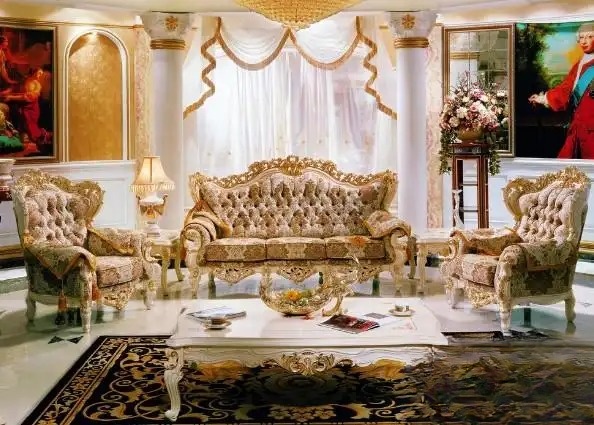Classification and characteristics of European style furniture
Classification and characteristics of European style furniture
Introduction: European furniture is an important element of European classical style decoration, mainly represented by Italian, French and Spanish style furniture. It pays attention to fine hand-cutting and carving, and the outline and turning parts are composed of symmetrical and rhythmic curves or surfaces, and are decorated with gold-plated copper ornaments. It has a simple structure, smooth lines, rich colors and a strong sense of art. This article will take you into European furniture.

European style furniture classification
European-style furniture can be divided into four types according to different style characteristics and detail processing techniques: European classical style furniture, European neoclassical style furniture, European pastoral style furniture, and simple European style furniture.
European classical style furniture
As an important home furnishing genre, European classical style continues the characteristics of royal aristocratic furniture from the 17th to the 19th century. It strives for perfection in every detail and pursues luxury and elegance in solemnity. After incorporating modern design techniques, it is closer to practicality and reveals the historical traces and profound cultural heritage of European tradition.
European neoclassical style furniture
European neoclassical furniture abandons overly complex textures and decorations and simplifies lines. Combining classical style with personal unique style and modern spirit, classical furniture presents a colorful appearance. Although it has classical curves and curved surfaces, it lacks classical carvings and uses more straight lines of modern furniture. White, coffee, yellow, and crimson are the common main colors in European style. A small amount of white is mixed to make the colors look bright and generous, giving the entire space an extraordinary open and tolerant demeanor.
European country style furniture
European pastoral style furniture abandons the glitz and complexity of Baroque and Rococo styles, emphasizes the unique cultural connotation of Europe as a whole, pays attention to simple, clear lines and elegant decoration, and is influenced by traditional handicrafts and adopts modern advanced technology, making European pastoral style furniture more graceful, elegant and noble. European pastoral style furniture pays attention to details, and there are hundreds of styles for a small handle. Moreover, the painting process of European pastoral style furniture is complicated, and the treatment of some details is very different from other furniture. The texture pattern produced is stable and delicate. In modern cities, European pastoral style furniture may not represent the real countryside or pastoral. It is more like an experience of people advocating nature, which allows people to relax and stretch their body and mind. It's like breathing the breath of nature.
Simple European style furniture
Also known as simple European style furniture, European simple style furniture is in the same vein as European classical style furniture, and has the same purpose as American style furniture. On the basis of following tradition, it pursues more comfort and practicality of furniture. It abandons the complexity of classical furniture and uses more simple lines and natural solid wood texture, but it is noble and elegant. It realizes a simple but not simple design style.
Carved patterns: mainly rose decorations, bouquets, ribbons, cups, etc. are tied with beautiful flower knots.
Furniture style: straight lines are used as the basic tone without overly dense detailed decorations, right angles are the main body, and the pursuit of harmony and echo of the overall proportions is adopted. The workmanship is exquisite and the shape is refined and simple.
Characteristics of European style furniture
1. Pay attention to decoration: Whether it is "classical" or "neoclassical furniture", you can often see various embroidered fabrics, tassels, rivets and other decorations.
2. Complex lines and emphasis on carving: "Baroque furniture" has complex and exquisite carved patterns; although "Rococo furniture" also pays attention to carving, the lines are softer; and the lines of "neoclassical furniture" are brighter, mainly using inlays to present the texture.
3. Preference for bright colors: Especially "Baroque furniture" has strong colors, with gold as the main color, and is often decorated with gold plating or gold foil, making it look magnificent; "Rococo furniture" has softer colors, with beige and white patterns as its main colors; "Neoclassical furniture" tends to be warmer in color, such as wood color.